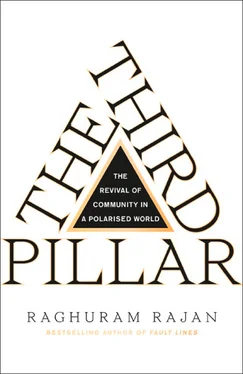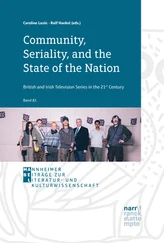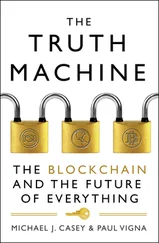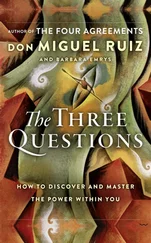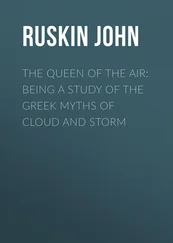Creating Binding Social Relationships
In close-knit communities, few transactions are explicit exchanges of broadly equal values. A mother nurses her child with no thought of sending a bill for services rendered, while we ply dinner guests with food and wine with no concern of when they will reciprocate. As ties get weaker in the community, more reciprocity is expected, but usually in such a way that the original gesture is never fully reciprocated so as to ‘close the account’.
American anthropologist Laura Bohannan spent years working with the Tiv people of Northern Nigeria. When she arrived to study the community, she was inundated with gifts by the very poor villagers – a common experience for guests in traditional societies. Not wanting to appear rude, she accepted them but was eventually taught the appropriate etiquette by the headman’s wife, who told her to ‘stop wandering aimlessly about the countryside and start calling to return the gifts’ she had received. Bohannon concluded:
‘What had been given must be returned, and at the appropriate time – in most cases, within two market weeks. For more valuable gifts, like livestock, one should wait until the giver is in sudden need and then offer financial aid. In the absence of banks, large presents of this sort are one way of saving…. I couldn’t remember [who gave what]; I didn’t think anyone could. But they did, and I watched with amazed admiration as Udama [the headman’s wife] dispensed handfuls of okra, the odd tenth-penny and other bits in an endless circle of gifts in which no one ever handed over the precise value of the object last received but in which, over months, the total exchange was never more than a penny in anyone’s favour.’ 6
Gifts among the Tiv, as in most societies, serve to strengthen social bonds. That a gift is not returned in exact and equal measure prevents gift exchange from becoming a market transaction. Indeed, the very point is that nothing is demanded in return by the giver – social ties are built only when the giver seemingly forgets the gift as soon as it is given. Yet someone who only receives and never gives is quickly ostracised, hence the advice to return the gifts. Relationships are built not just by offering gifts but also by offering services. As Bohannan sat with neighbours assisting a woman’s childbirth, she reflected:
‘I also remembered that my great-grandmother had her first child alone with her husband on the frontier; in her diary, she had longed for another woman then…. More generally, though, I could see that where we multiplied specialists and services, these people multiplied personal relationship …’
In small communities where there are few specialists to provide services, neighbours fill in the gaps. For example, in Amish communities in rural Pennsylvania, everyone comes together in ‘barn raisings’ to build a barn for someone in the community. It is as much a community celebration as collective work. Such actions broaden the areas of interaction and help deepen relationships within the community. Indeed, every transaction within a community, whether economic or not, is just the most recent link in a set of cross-linked block chains which stretch back into the past, and likely will well into the future.
The ties within a community enable it to act as a support of last resort. When all is lost, we can always return to our family or village, where we will be helped because of who we are rather than what we can pay or what we have accomplished. A study finds that 20 per cent of households within a caste group in India in 1999 sent or received transfers of money. 7The transfers amounted to between 20 and 40 per cent of the receiving household’s annual income. Each sending household sent between 5 to 7 per cent of its annual income, implying a number of them combined to help a household that had major contingencies like illness or marriage. Even with modern sources of social insurance such as unemployment benefits and pensions, the community is critical in filling holes that are left by the formal government and market systems.
Facilitating Transactions
Communities facilitate internal trading by monitoring behavior and ostracising defaulters, cutting them off from further transactions and community support. 8Some embed differential treatment of insiders and outsiders into their norms. Anthropologist Douglas Oliver observed that to the Siuai of Solomon Islands, mankind consists of relatives and strangers. ‘Transactions with relatives ought to be carried out in a spirit devoid of commerciality.’ With few exceptions, however, ‘persons who live far away are not relatives and can only be enemies … One interacts with them only to buy and sell – utilising hard bargaining and deceit to make as much profit from such transactions as possible.’ 9With such an attitude, it would take a particularly confident outsider to contemplate trading with the Siuai, ensuring outside trades would be few and far between. But that may be the point! Parochial as the attitude may seem, it fortifies the community by strengthening within-community trade and limiting opportunities for members to stray outside.
Encouraging Favours and Resolving Conflicts
Bonds between members are obviously stronger if they grow up together, undergo common socialisation processes and rites of passage, and share common values and traditions. However, bonds can also build between members of a community in a more modern setting where they come together only in adulthood. Indeed, despite having access to a modern legal system, neighbours may rely on community norms to resolve potential conflict because it is cheaper.
Robert Ellikson, a legal scholar at Yale University, studied ranchers in Shasta County in Northern California and found that their community had developed a variety of unwritten norms to deal with various frictions. For example, cattle from one ranch might trespass onto another rancher’s land. If that rancher discovered an animal wearing someone else’s brand, he would inform the owner. The owner, though, might take weeks to pick up his animal in a collective roundup – it is too costly to go fetch each animal as it strays. In the meantime, the rancher would incur costs of hundreds of dollars for feeding the trespassing cattle. Nevertheless, he typically did not charge the owner for this.
Ellikson conjectures this is because in the thinly populated rural areas of the county, neighbours expect to interact with one another on multiple dimensions such as fence repair, water supply, and staffing the volunteer fire station, and these interactions will extend far into the future. Any ‘trespass dispute with a neighbour is almost certain to be but one thread in the rich fabric of a continuing relationship.’ Therefore, most residents expect giving and receiving to balance out in the long run – a shortfall in the trespass account will be offset by a surplus in the fence repair account.
Accounts need not balance over time. When a transfer is necessary to square unbalanced accounts, neighbours in Shasta County prefer using in-kind payments, not money, for the latter is thought ‘unneighbourly’: If one’s goat eats a neighbour’s plants, the neighbourly thing to do would be to replant them, not offer money. Indeed, when one of the ranchers paid to settle a trespass dispute, others rebuked him for setting an unfortunate precedent. 10The point is that neighbours prefer to keep an ongoing cooperative relationship rather than end it through ‘cold hard cash’, which can signal an arm’s-length dealing and poison the atmosphere. It is the web of credit and debit accounts within Shasta County ranchers, settled with favours rather than with money so that no one quite knows what the balance is, that seems to tie the community together.
In every such community, there will be potential deviants, who are happy to take but will not give. Ellikson describes a rising set of penalties for defaulters, starting with adverse gossip within the close community. A besmirched reputation is enough to stop the flow of favours, so most ranchers are very careful not just about adhering to the norms but about being seen to be adhering to the norms. If the deviant does not really care about his good name, aggrieved ranchers may take sterner action like killing the trespassing animals after giving the owner due warning, or reporting the owner to county authorities. While disputes are resolved under the shadow of the law, legal remedies are rarely invoked, and even then, typically against outsiders. As one rancher put it, ‘Being good neighbours means no lawsuits.’ 11More generally, as we will see, communities can be diminished by the intrusion of the state, and it is not surprising that Shasta County tries to avoid relying on it.
Читать дальше
